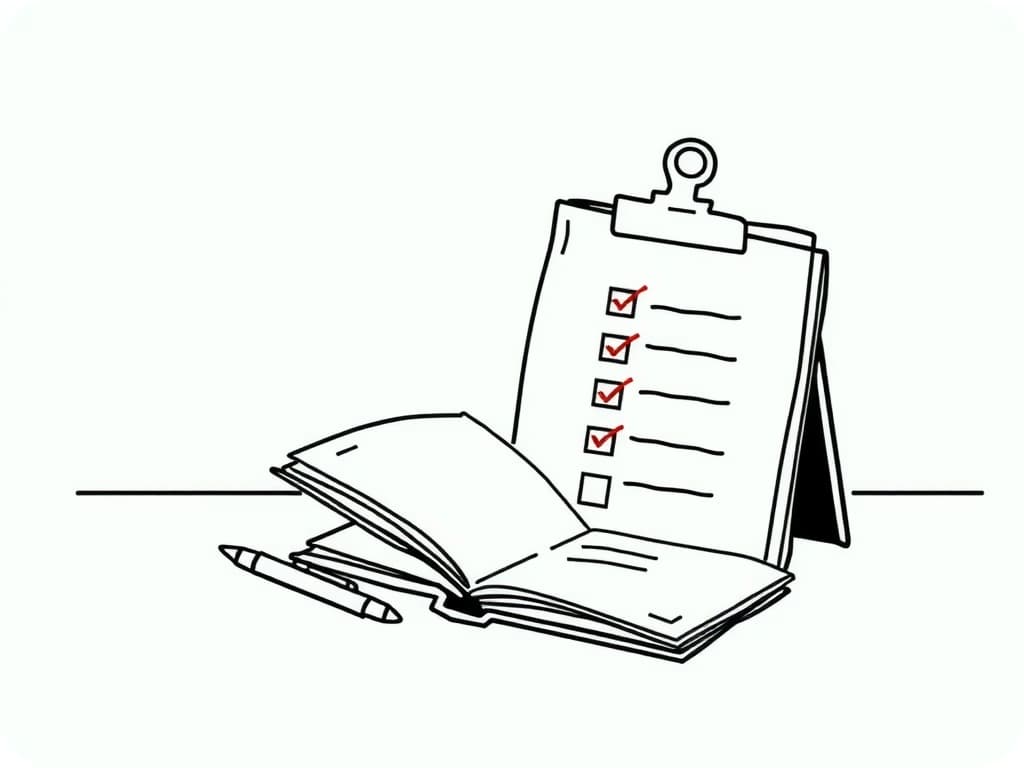RBT Environmental Variables Documentation: Essential Guide

RBT Environmental Variables Documentation: Essential Guide
Imagine starting a session only to realize a sudden room change has thrown off your client's routine. This leads to unexpected behaviors that skew your data. As a Registered Behavior Technician (RBT), your session notes do more than track skills. They capture the full context of what influences behavior, including the often-overlooked environmental variables. Proper RBT environmental variables documentation ensures BCBAs can analyze patterns accurately, adjust interventions, and meet insurance requirements for medical necessity Applied behavior analysis medical necessity guide - Aetna.
In this step-by-step guide, you'll learn how to identify, record, and communicate these variables effectively. We'll cover a pre-session checklist, objective description techniques, integration into ABC data, handling extraneous factors, and post-session reviews. By the end, you'll have actionable tools to enhance session outcomes and support your team's decision-making.
Here are 3-5 key takeaways from this guide:
- Use a pre-session checklist to spot potential variables early and align with BACB guidelines.
- Describe changes objectively with measurable details to avoid bias in your notes.
- Integrate environmental factors into ABC data for richer context on behavior triggers.
- Document extraneous variables like biological states to explain data anomalies accurately.
- Summarize and communicate findings post-session to inform BCBA adjustments.
Step 1: Pre-Session Checklist for RBT Environmental Variables Documentation
Before any ABA session begins, a quick environmental scan sets the stage for reliable data collection. This checklist helps RBTs spot variables that could influence client behavior. It aligns with BACB guidelines on describing conditions necessary for program success Per the BACB Professional and Ethical Compliance Code (2022).
Start by reviewing the client's schedule and known triggers. You might ask: Has the location changed? Are there new materials or staffing shifts? For instance, common factors include noise from construction or a different therapist's presence. These can alter a client's motivation or focus.
- Check physical setup: Temperature, lighting, and seating arrangements. A warmer room might increase fatigue in clients sensitive to sensory input.
- Note social elements: Family visitors or sibling interactions that could distract or provide unintended reinforcement.
- Assess biological cues: Recent illness, sleep patterns, or medication changes reported by caregivers.
Document these proactively in your notes template to flag them early. This practice not only prevents surprises but also demonstrates diligence in your ABA session notes environment tracking. For more on general documentation tips, see our guide on ABA Documentation Best Practices for RBTs.
Completing this checklist takes just 2-3 minutes. Yet it builds a foundation for objective observations throughout the session.
Step 2: Objective Description of Environment Changes
During the session, describe environmental shifts using factual, observable language. This avoids bias and ensures notes are useful for BCBA analysis. The goal is to report what happens without interpreting why. Best practices emphasize clear, measurable details over assumptions As noted in Theralytics (2023).
For example, instead of "The noise was distracting," write: "Ambient noise from hallway traffic reached 70 decibels for 5 minutes during transition activity." This quantifies the variable and ties it to timing.
Key elements to document include:
- Sensory factors: Changes in noise, lighting, or smells, like a fan turning on mid-session.
- Spatial adjustments: Moving from a quiet therapy room to a shared space with peers.
- Temporal details: Session starting 15 minutes late due to traffic, potentially affecting the client's energy levels.
Use tools like a simple notepad or digital app for real-time entries. If a variable impacts behavior—such as increased agitation from bright overhead lights—note the correlation factually: "Client vocalized at higher volume following light activation."
This approach supports ethical reporting under the RBT Ethics Code. It promotes integrity in data collection. Integrating ecological variables RBT responsibilities like this ensures your notes contribute to holistic program evaluation.
Step 3: Integrating Environmental Variables into ABC Data for RBT Environmental Variables Documentation
ABC data—Antecedent, Behavior, Consequence—forms the backbone of ABA analysis. But environmental variables enrich the "A" by providing context for triggers. Documenting these helps pinpoint how surroundings shape responses. This improves intervention precision Per Ambitions ABA (2023).
In practice, expand the antecedent section to include ecological details. For a session where a client refuses a task, note: "Antecedent: Request to complete puzzle in room with open window (bird sounds audible); no prior exposure to outdoor noise today." This reveals potential sensory overload as a factor.
Follow these steps for seamless integration:
- Observe the immediate trigger alongside broader environment: Was the behavior preceded by a crowded room or routine disruption?
- Link to consequences: Did the environment reinforce the behavior, like escaping noise via elopement?
- Use consistent formatting: In your ABC chart, add an "Environmental Notes" column for variables like staffing ratios or material availability.
Research highlights how such details distinguish environmental from social triggers. This leads to targeted modifications like quieter spaces As detailed in PMC study on environmental manipulations (2022). For structured note formats, check our ABA SOAP Notes Guide for RBTs & BCBAs.
By weaving in these variables, your RBT environmental variables documentation elevates ABC data from basic logs to insightful tools for behavior plans.
Step 4: Documenting Extraneous Variables Like Client Biological State
Not all influences are session-specific. Extraneous variables, such as a client's health or sleep, can subtly affect performance. These "ecological variables" outside the planned intervention require noting. This explains data anomalies, as per RBT task list requirements for reporting progress-affecting factors Per the BACB RBT Task List (2022).
Common examples include illness, hunger, or medication side effects. If a usually engaged client shows low motivation, document: "Client reported no breakfast; observed yawning 3 times in first 10 minutes." Avoid diagnosing—stick to observables.
Strategies for accurate capture:
- Gather pre-session intel: Ask caregivers about overnight events or recent changes.
- Monitor during: Note signs like fatigue (e.g., slower response times) tied to potential causes.
- Categorize clearly: Separate from core ABC to highlight irrelevance to teaching but relevance to interpretation.
As noted in Behavior Tech Course (2023), variables like missed meals can mimic skill deficits. So documentation prevents misguided adjustments Why Reporting Ecological Variables Supercharges Your BT Sessions. This thoroughness aids in distinguishing true progress from temporary influences.
For audit readiness, review our Ultimate BCBA Audit Checklist. It ensures these notes withstand scrutiny.
Step 5: Post-Session Summary and Communication to the BCBA
After the session, synthesize environmental notes into a concise summary. This informs your supervisor and ensures variables shape future planning. It also complies with supervision standards.
Review your entries: Highlight impacts, like "Temperature above 75°F correlated with reduced task completion from 80% to 50%." Then, communicate via email or shared platform. Share raw notes and flag key variables for discussion.
Best practices include:
- Prioritizing relevance: Only escalate if a variable likely skewed data significantly.
- Using templates: Standardize summaries for efficiency, e.g., "Environmental Summary: [List]; Potential Impact: [Brief analysis]."
- Seeking feedback: Ask your BCBA how variables influenced the session to refine your approach.
This process fosters collaboration. It aligns with BACB ethics on addressing implementation barriers As outlined in the BACB Compliance Code (2022). Over time, it sharpens your ecological variables RBT expertise.
Frequently Asked Questions
What are environmental variables in RBT work?
Environmental variables in RBT sessions refer to any physical, social, or biological factors outside the teaching plan that may influence behavior. Examples include noise levels, room changes, or caregiver presence. As noted in Behavior Tech Course (2023), documenting these provides context for data fluctuations without altering core interventions Why Reporting Ecological Variables Supercharges Your BT Sessions.
Why is documenting environmental variables important for RBTs?
Documenting these variables explains behavior variations. It prevents misinterpretation of progress and supports program adjustments. This enhances team collaboration and meets BACB standards for ethical reporting. It ensures interventions are ecologically valid Per the BACB RBT Ethics Code (2022).
How do ecological variables differ from other environmental factors in ABA?
Ecological variables encompass broader influences like biological states (e.g., sleep) or social dynamics. Core environmental factors focus on immediate session setups like lighting. This distinction aids in comprehensive ABC analysis As noted in Ambitions ABA (2023).
What are common ecological variables that impact ABA sessions?
Typical variables include health issues (illness, fatigue), basic needs (hunger, hydration), physical changes (noise, temperature), and social shifts (new staff). Theralytics (2023) emphasizes noting these to correlate with behavior patterns ABA Session Notes Examples.
How should RBTs objectively document environmental changes?
Use factual, measurable language like "Noise from hallway at 5:30 PM" instead of subjective terms. BACB guidelines stress timely, accurate reporting to maintain data integrity Per the BACB RBT Task List (2022).
How can documenting ecological variables improve ABA effectiveness?
By revealing hidden triggers, it allows targeted modifications, like quieter spaces. This boosts engagement and reduces challenges. A PMC study (2022) shows environmental tweaks enhance outcomes through antecedent interventions Effectiveness of Environmental Manipulation.
What are common mistakes in RBT environmental variables documentation?
RBTs often overlook pre-session checks or use subjective language like "distracting noise." Another error is failing to link variables to ABC data clearly. To avoid this, stick to observables and consistent templates. This prevents data misinterpretation, as highlighted in ABA best practices.
Detailed RBT environmental variables documentation transforms routine notes into powerful tools for clinical insight. By capturing the full session context—from pre-checks to post-summaries—you empower BCBAs to make evidence-based decisions. This ultimately improves client progress and therapy compliance.
To apply this, start with one step: Implement a pre-session checklist this week. Review its impact on your next supervision meeting. Next, explore customizable templates in Praxis Notes to streamline your process. Finally, discuss variables openly with your team to build collaborative habits. These practices not only meet professional standards but also amplify your role in meaningful behavior change.
Popular in ABA Session Notes & Tools
- 1
RBT Supervision Documentation: 2025 BACB Guide & Templates
1,2469 min read - 2
Master ABA Medical Necessity Documentation: Avoid Denials
5719 min read - 3
Master ABA SOAP Notes: Guide for RBTs & BCBAs
5239 min read - 4
ABA Documentation Best Practices for RBTs: Essential Tips
4935 min read - 5
Guide to ABA Progress Reports for Insurance Reauthorization
4258 min read
Popular in ABA Session Notes & Tools
- 1
RBT Supervision Documentation: 2025 BACB Guide & Templates
1,2469 min read - 2
Master ABA Medical Necessity Documentation: Avoid Denials
5719 min read - 3
Master ABA SOAP Notes: Guide for RBTs & BCBAs
5239 min read - 4
ABA Documentation Best Practices for RBTs: Essential Tips
4935 min read - 5
Guide to ABA Progress Reports for Insurance Reauthorization
4258 min read
Related Resources
Explore more helpful content on similar topics

RBT Session Workflow Checklist: Step-by-Step Guide
Master RBT session workflow with this step-by-step checklist guide. From authorization and preparation to documentation and compliance in ABA therapy. Download now for efficient sessions!

ABA Documentation Best Practices for RBTs: Essential Tips
Struggling with ABA documentation best practices for RBTs? This FAQ covers RBT session notes, ABC recording tips, ethical standards, and compliance with BACB, HIPAA, and insurance requirements to streamline your workflow and ensure accuracy.

RBT Supervision Documentation: 2025 Compliance Guide
Master RBT supervision documentation with this step-by-step guide to compliant notes. Learn BACB requirements, key elements for supervision notes ABA, and prep for 2026 changes to stay certified and excel in ABA.